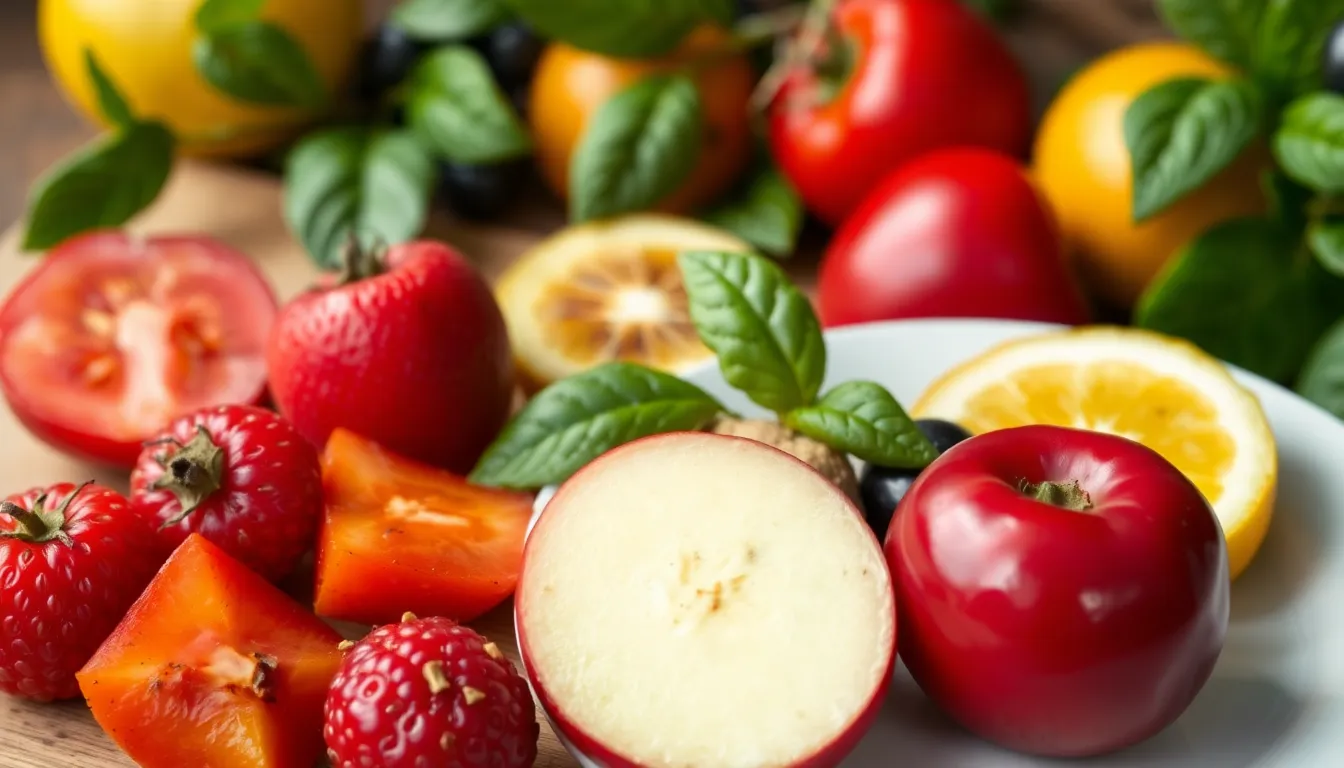Fruits in Italian Cuisine: Classic Dishes to Try at Home
I. Introduction
When we think of Italian cuisine, images of rustic pastas, aromatic herbs, and rich sauces often come to mind. However, one of the most delightful elements of this culinary tradition is the use of fruits. Fruits not only enhance the flavor profiles of various dishes but also add vibrant colors and textures that make every meal a feast for the senses.
The significance of fruits in Italian cooking cannot be overstated. They are celebrated for their natural sweetness, acidity, and nutritional benefits. Moreover, the importance of seasonal and local produce is a cornerstone of Italian culinary philosophy, allowing cooks to create dishes that reflect the essence of their region and the time of year.
This article will explore classic Italian dishes featuring fruits, offering a guide to incorporating these delicious ingredients into your home cooking. From antipasti to desserts, there is a fruit-inspired dish for every occasion!
II. The Role of Fruits in Italian Cooking
A. Historical Context of Fruit Use in Italian Dishes
The relationship between fruits and Italian cuisine dates back centuries. Ancient Romans enjoyed a variety of fruits, often incorporating them into their meals. As trade expanded, new fruits were introduced to Italy, enriching the country’s culinary landscape. Today, fruits are an integral part of traditional recipes, reflecting the country’s rich agricultural heritage.
B. Regional Variations: How Different Regions Incorporate Fruits
Italy’s diverse geography and climate allow for a wide variety of fruits to be grown in different regions. This has led to unique regional dishes that highlight local fruits:
- North Italy: Uses apples, pears, and berries, often in pastries and desserts.
- Central Italy: Features figs and grapes, prominently in savory dishes and desserts.
- Southern Italy: Incorporates citrus fruits, such as lemons and oranges, in salads and seafood dishes.
C. Nutritional Benefits of Including Fruits in Meals
Fruits are packed with vitamins, minerals, and antioxidants, making them a nutritious addition to any meal. They offer numerous health benefits, including:
- Boosting immune function
- Improving digestion
- Reducing the risk of chronic diseases
Incorporating a variety of fruits into your diet can enhance overall health while adding delicious flavors to your culinary creations.
III. Classic Italian Dishes Featuring Fruits
A. Antipasto and Salads
1. Caprese Salad with Fresh Mozzarella and Tomatoes
This classic dish highlights the simplicity of fresh ingredients. The combination of ripe tomatoes, creamy mozzarella, fresh basil, and a drizzle of olive oil celebrates the beauty of Italian produce.
2. Prosciutto e Melone (Prosciutto with Melon)
This elegant antipasto pairs sweet, juicy cantaloupe or honeydew with salty prosciutto. It’s a perfect starter for summer gatherings.
3. Fruit-Infused Caponata
Caponata is a Sicilian eggplant dish that can be elevated by adding dried fruits like raisins or apricots. This sweet and savory combination makes for a delightful appetizer.
B. Main Courses
1. Chicken Cacciatore with Peppers and Olives
This rustic Italian dish features chicken simmered with bell peppers, olives, and sometimes even tomatoes. Adding seasonal fruits like olives enhances the depth of flavor.
2. Pork Chops with Apples and Balsamic Reduction
The tartness of apples pairs beautifully with savory pork. This dish is often finished with a balsamic reduction to add a sweet and tangy kick.
3. Seafood Dishes with Citrus and Fennel
Seafood is often enhanced with the bright flavors of citrus fruits like lemon and orange. A seafood stew with fennel and citrus creates a refreshing and aromatic meal.
C. Desserts
1. Torta della Nonna (Grandma’s Cake) with Pine Nuts and Fruits
This traditional custard tart is often topped with pine nuts and may include fruit like cherries or peaches for added flavor.
2. Crostata di Frutta (Fruit Tart)
This beautiful tart features a buttery crust filled with pastry cream and topped with seasonal fruits, making it a stunning centerpiece for any dessert table.
3. Gelato alla Frutta (Fruit Gelato)
Homemade fruit gelato is a refreshing treat, especially during the hot summer months. Using ripe, seasonal fruits ensures a burst of flavor in every bite.
IV. Seasonal Fruits and Their Culinary Uses
A. Spring Fruits: Strawberries, Apricots
Spring is a time for rejuvenation, and fruits like strawberries and apricots are among the first to appear. They are perfect for salads, desserts, or even savory dishes like risottos.
B. Summer Fruits: Peaches, Cherries
Summer brings an abundance of juicy peaches and cherries, which can be used in everything from salads to desserts. Their sweetness shines when grilled or roasted.
C. Fall Fruits: Figs, Pomegranates
As the weather cools, figs and pomegranates come into season. They are excellent in salads or as accompaniments to roasted meats, bringing a touch of sweetness to hearty dishes.
D. Winter Fruits: Citrus Fruits (Oranges, Lemons)
Citrus fruits are the stars of winter, providing bright flavors in otherwise muted seasons. They are commonly used in salads, marinades, and desserts.
Seasonal Fruits in Italian Cuisine
| Season | Fruits | Typical Dishes |
|---|---|---|
| Spring | Strawberries, Apricots | Strawberry Risotto, Apricot Crostata |
| Summer | Peaches, Cherries | Peach Caprese, Cherry Clafoutis |
| Fall | Figs, Pomegranates | Fig and Prosciutto Salad, Pomegranate Glazed Chicken |
| Winter | Citrus Fruits | Citrus Salad, Lemon Risotto |
V. Conclusion
Fruits play a vital role in Italian cuisine, adding flavor, color, and nutrition to countless dishes. From antipasti to desserts, these ingredients can elevate your cooking and bring a taste of Italy into your home. Embrace the seasonal bounty of fruits and experiment with classic Italian recipes to create delicious meals that celebrate the beauty of fresh produce.
As you explore the diverse flavors and combinations that fruits offer, remember that the heart of Italian cooking lies in its simplicity and respect for quality ingredients. Buon Appetito!




